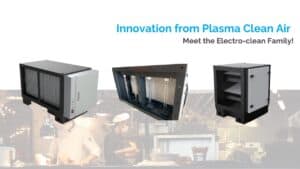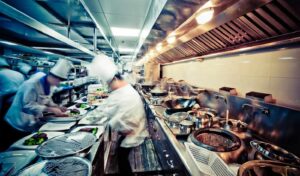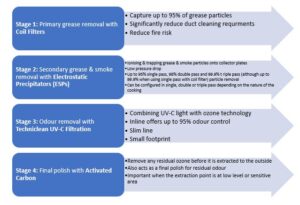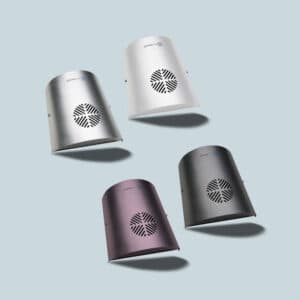By far the biggest challenge we face when it comes to grease, odour and smoke control for commercial kitchens, is finding suitable plant space to install the equipment.
Quite often, odour control specialists are called in towards the end of the project and are challenged with lack of plant space and inadequate duct runs. This leads to poor ductwork transitions and locating equipment too close to bends resulting in turbulent air flow and poor equipment performance.
The challenge becomes more difficult when we are called into sites where odour control has not been considered at all and the restaurant is under pressure due to odour complaints from the local authority.
Ideally, we would be consulted at the start of a project rather than the end, but we do have a number of solutions available when compromises need to be made for odour, grease and smoke control selection. Here’s how we go about it.
EMAQ+ Odour Risk Assessment
First of all, we need to carry out an Odour Risk Assessment to assess the level of grease, smoke and odour on your cooking application and its impact on neighbouring properties. As part of the assessment, we also review the volume of extract air to be treated, the kitchen extract ventilation layout and available plant space for grease, smoke and odour filtration. For more details on our Odour Risk Assessment and installing equipment to maximise performance, click here.
Once we have made our initial assessment, we can determine whether the equipment needs to be canopy mounted, in-duct mounted, UV ozone injection, or whether a recirculating filtration tower may be a more viable option. Where possible we recommend that kitchen extract ventilation discharges to atmosphere with the appropriate grease, smoke and odour filtration in place.
Our aim is to provide you with the most effective equipment with the lowest possible static pressure drop. Our strategy is to commence grease and odour control in the canopy at the very start of the kitchen extraction system. This both maximises odour control performance and reduces TR/19 canopy and duct cleaning. Our Guidance on the Control of Odour and Noise from Commercial Kitchen Exhaust covers this in more detail.
Controlling Cooking Smells from Commercial Kitchens
When it comes to gaseous odour control, our Xtract Series UV Ozone injection units are mounted outside the airstream so don’t add any additional static pressure to the system so is a good retrofit solution as well as being suited to new installations. They are placed as close to the source of odour to maximise ozone residence time. If duct runs don’t accommodate the minimum 2 second Residence Time, we find that combining UV ozone with activated carbon works well.
Grease and Odour Control
If plant space is limited and there is a high level of grease and odour from the cooking application, our preferred solution is our canopy mounted Eco Fleece Filters partnered with Canopy Mount UV. As the name suggests, this solution fits into the canopy and starts to act on grease and odour at source, keeping the ductwork grease free and significantly reducing TR19 duct cleaning.
Grease, Smoke and Odour Control
For very high levels of grease and smoke and odour, our combined ESP UV solution is a packaged unit with the smallest footprint on the market. Based on our Odour Risk Assessment, we will be able to advise whether single, double or even triple pass ESP configurations are required. Applications such as flame grilled burgers or Peri Peri / Piri Piri chicken required at least two passes of ESP due to the very high levels of grease and smoke.
Please note that this solution needs correctly sized transitions from ductwork and bends in accordance with DW/144 to ensure laminar air flow. This is because turbulent airflow at high linear velocities will significantly impact performance.
For a more detailed review of how to maximise the performance of kitchen ventilation filtration equipment, click here.
Recirculating Air Filtration Systems
Remove grease, smoke and odour from commercial kitchens where it is not possible to extract to the outside due to planning constraints or where extraction ductwork is not practical or economically viable.
Recirculating Air Filtration Towers incorporate a fan and filter set and can be floor mounted as a tower in vertical orientation or duct mounted horizontally. Once the kitchen exhaust air has passed the filtration stage clean air is recirculated back into the kitchen.
Recirculation systems can only be used with electric cooking applications, and it is recommended to install air conditioning to prevent a build-up of heat in the kitchen area.
Planned Preventative Maintenance – PPM
It’s vital that PPM is considered early in the design scheme. This ensures that the equipment is installed with easy maintenance access and the restaurant operator understands the importance of regular service and maintenance. Combining equipment service with TR19 canopy and duct cleaning will save money in the long run, click here to find out how.
Odour Control in Commercial Kitchens With Plasma Clean Air
Unpleasant odours can disrupt the experiences for guests, impact employees’ morale, and cause disturbances to neighbouring establishments.
Our market leading solutions are designed to reduce grease build up, clear smoke and remove odour, keeping you compliant and reducing fire hazards.
Get in touch with one of our experts today for a no-obligation review of your service and maintenance needs and let us help you maximize your savings while maintaining the highest performance.







